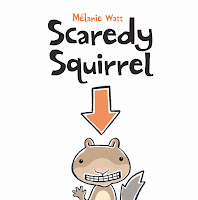
Directed by: Hayao Miyazaki
Walt Disney Video; 2006 (English Language Version)
2 disc Widescreen DVD; Animated Film
Ages: Kindergarten through Adult
This animated Japanese adaptation of Diana Wynne Jones' novel follows the adventures of a cursed girl and a wizard who has lost his heart as they struggle to break their separate curses and save their nation in the face of war.
My Thoughts:
To begin with, if I were reviewing this film on its merits as a film, I would give it a good review. It was a fine motion picture. Artistically, it was beautiful. Technically, the dubbing was flawless. The actors did an amazing job. I love Christian Bale, and I love Emily Mortimer. Casting them for the English Language version was genius. They truly invested their characters with honesty and feeling. The film was nominated for an academy award, and won countless other honors. This included the 2006 Family Film-Animated at the Young Artists Awards. Still, I am not here to do a film review for a film review's sake, but rather a review of the work in reference to children. And, sadly, as a kid's movie, "Howl's Moving Castle" left a lot to be desired...Young Artists Award notwithstanding.
I originally chose to review this film based on the recommendations of friends (who are in film school), family (who are film buffs), and Sarah (our esteemed course instructor who raved about Miyazaki). The problem was that, Sarah aside, the recommendations had not been made with kid friendliness in mind, but rather to me as an adult. (To be fair to Sarah, she recommended the studio, not the particular film.) I had not seen any Miyazaki, but had heard a lot of buzz surrounding "Kiki's Delivery Service," "Spirited Away," and "Howl's Moving Castle." This one happened to be the first available at my library, and the fact that two of my favorite actors were voices was a surprise bonus.
I was a little surprised, upon checking it out, to discover that it was rated PG. However, several fine animated films are PG, so I wasn't initially concerned. After watching it rating is most likely due to the prevalence of bombing and violence that comes with setting a film in the midst of war. This is also one of the things that makes the film inappropriate for smaller children, although it is nothing that upper elementary couldn't handle. (To clarify, I am not at all squeamish about exposing children to movies with guns and explosions...I grew up with Looney Tunes and superhero shows. Therefore, if the amount of bombing surpised me, you know there was a lot.) Also, the story line was fairly convoluted and would be hard for a younger child to follow. I am not sure whether this is a result of bad translation, poor adaptation, or the quality of the source material. Artistic touches, like how the main character phases from old to young depending on her mood, are never explained in the film and would be confusing to a child. They were confusing to me at first, and I am 25.
In short, this is a good movie. I liked this movie. I would recommend it to some of my friends and older cousins (high school/junior high) who like anime and Manga. I would not show this movie to a child under 10, not because there is anything truly bad about it, but because I don't think they would enjoy or understand it. Also, depending on how young they were, or their parents' views on guns and violence, I would actually recommend that some children NOT see it.
The Thoughts of Others:
Roger Ebert had a mixed reaction to this film. He admitted that it was good, but called it a disappointment in comparison to other Miyazaki works. While admiring the beauty of the animation, and the technical scope, he felt that the "underlying plot grows murky and [viewers will] grow impatient at spectacle without meaning." He does not address its suitablility for kids, but since he doesn't recommend the movie to anyone, it is a moot point.
The
Rolling Stone review for praised the voice talents, and assured readers that the dubbing was top notch. They rhapsodized about Miyazaki's art work They summed the film up in one word...bliss. However, it should be noted, that children are not the primary readership of Rolling Stone, and therefore not the reviewer's main concern. The article does not address its suitability to the age group.
 By Iona Opie; Illustrated by Rosemary Wells
By Iona Opie; Illustrated by Rosemary Wells






















